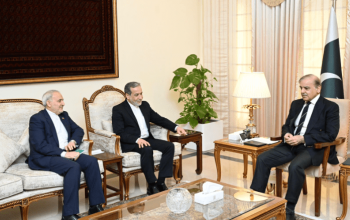Electricity and gas prices are soaring. Power prices in Pakistan have a cumulative impact of up to 30% on overall inflation levels. The most seriously affected are prices of daily consumables, affecting living standards of the majority of the population, 40% of which live below the poverty line.
There have been widespread public protests and outcries against energy bills increases and power shortages. The government has announced concessions in energy prices for lower-end consumers, but hardly 15-20% of users benefit therefrom, with the vast majority continuing to bear the brunt.
Electricity tariffs have increased from around Rs24-28 PKWH to an average of a staggering Rs76 per unit over the last few years, mainly on account of surging generation costs, energy debts, power losses and taxes. Pakistan has the distinction of being a country with one of the highest rates of energy pilferage, euphemistically termed ‘line losses’ that would not be possible without departmental collusion.
In 2020 the Aggregate Technical & Commercial (AT&C) losses of Pakistan’s electricity sector stood at 29.7%, highest in the region. Sri Lanka had the lowest losses of 10%, followed by Turkey at 14.8%, Bangladesh 21.9%, India 23.9% and Nepal 24.4%.
This is a period of high electricity and gas prices with no apparent short-term remedy. Induction of measures of increasing share of cheaper sources of energy and upgrading transmission and distribution networks, to curtail line losses, could bring some amelioration, but results have so far proved elusive.
Electricity prices have increased and are anticipated to further enhance caused mainly by the gas and oil disruptions due to the Ukraine war and the fallout of the Israel-Gaza conflict on world energy prices.
The US, the UK and the EU are all facing energy inflation and shortages. Most of the European countries as well as Japan, China and India have stockpiled gas and pre-booked most of the world gas supplies to meet their winter requirements.
In Pakistan, ordinarily, nearly 40 % of national power requirements are met by gas and oil fired power producing plants. Among the various sources of power, cost-wise, hydropower electricity, contributing 25% of total generation, is the cheapest, followed by gas produced electricity. Power produced from fuel oil is the most expensive. Coal produces only a small portion of total power. Nuclear power provides 12.8% of total power, while solar and wind produce relatively smaller proportions of 9% and 4%, respectively.
A dilemma regarding gas prices persists arising from the insufficient deals made for future gas supplies when international prices had plummeted during early days of the Covid pandemic.
Due to the absence of sufficient long-term gas deals and the acute shortage caused by pre-bookings by major gas consumers, there is such an acute shortage of LNG on world markets that gas was not available to Pakistan in 2022-23 even at spot rates as high as $36 per MMBTU. The 15-year-long LNG agreement signed with Qatar in 2015 was @ $13 per MMBTU. Sadly, a former Prime Minister and a Finance Minister were sent to jail for purchases made at allegedly exorbitant rates for which no proof was ultimately forthcoming.
Paradoxically, it was Qatar once again to which resort was subsequently made for a gas deal by a regime that had taken criminal actions against previous gas deals that were cheapest in the world at the time.
Due to shortage of cheaper gas, Pakistan is being forced to use expensive furnace oil for generation and increasing electricity prices. It is anticipated that the electricity prices will further increase unless international oil prices fall, which appears improbable.
We may also brace ourselves to face serious gas shortages during the coming winters unless dramatic changes occur on the international market. The OPEC energy picture is also not likely to ease out in the foreseeable future.
Due to resource constraints and commitments made with the IMF, Pakistan may not be in a position to alleviate consumer difficulties on account of electricity and gas price hikes through subsidies. With depressed growth projections, there may not be required fiscal space. Contrarily, there may be a shrinkage in revenue targets. Nor will any expenditure savings be possible in the present tight situation to create budgetary space for relief on energy prices. One can hope against hope for some reduction in power losses. We may latch hopes onto chances of easing of world gas and oil prices but hopes alone can bring little relief to hard-pressed family budgets of the common man.
As a result we are finding electricity and gas prices increasing, leading to sharp public outcry. Due to shortage of cheaper gas, Pakistan is being forced to use expensive furnace oil which increases electricity prices. It is anticipated that the electricity prices will further increase during the coming months. In case world oil prices fall, some relief may appear.
The country is also likely to face acute gas shortages during the coming winters unless there are dramatic changes on the Ukraine and Gaza war fronts leading to greater availability of gas and energy at lower prices.
High power prices will adversely impact manufacturing and export sectors through enhanced costs. Due to capacity payment agreements with Independent Power Plants (IPPs), T&D losses and other reasons, circular debt has risen to nearly Rs1.7 trillion.
Rates of electricity supplied by Discoes versus solar power rates are highly discriminative against solar generation. Discoes supply power at around Rs76 PKWH whereas Discoes pay/adjust only up to Rs21-23 PKWH for solar energy supplied to power grid. A fairer cross-tariff structure is necessary to promote solar generation which holds opportunities for considerable accretion to cheaper available power.
Due to resource constraints and commitments made with the IMF, Pakistan will not be in a position to alleviate consumer difficulties on account of electricity price hikes. With depressed growth projections, there will not be any relief available from an expected revenue collection enhancement. Contrarily, there may be a shrinkage in revenue targets for the year. Nor will any expenditure savings be possible in the present tight situation to create fiscal space for relief on electricity prices.
We may latch hopes onto chances of easing of world gas and oil prices but hope alone is pitiable relief to hard-pressed family budgets of the common consumers.
Read the full story at the express tribune website.


